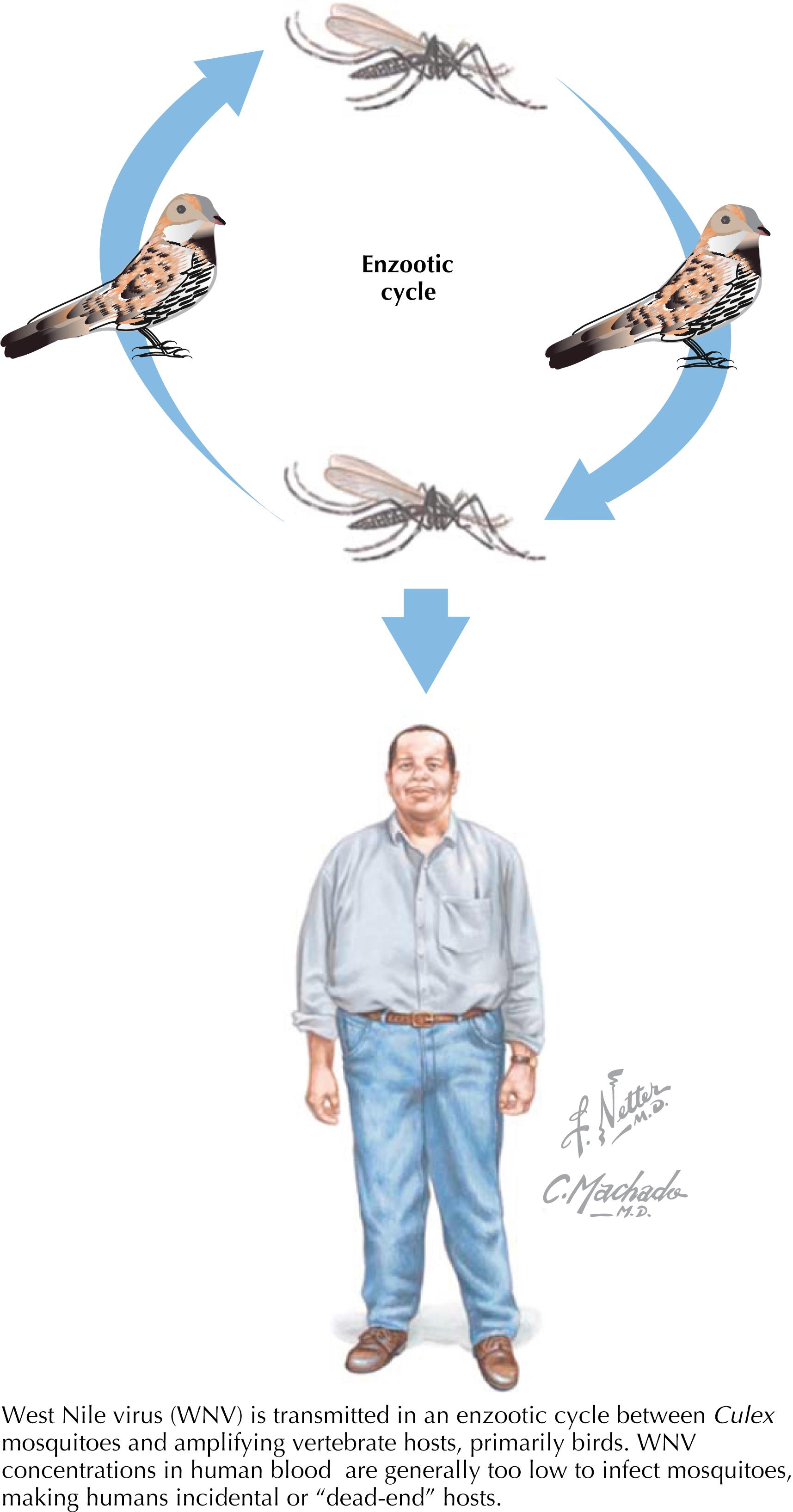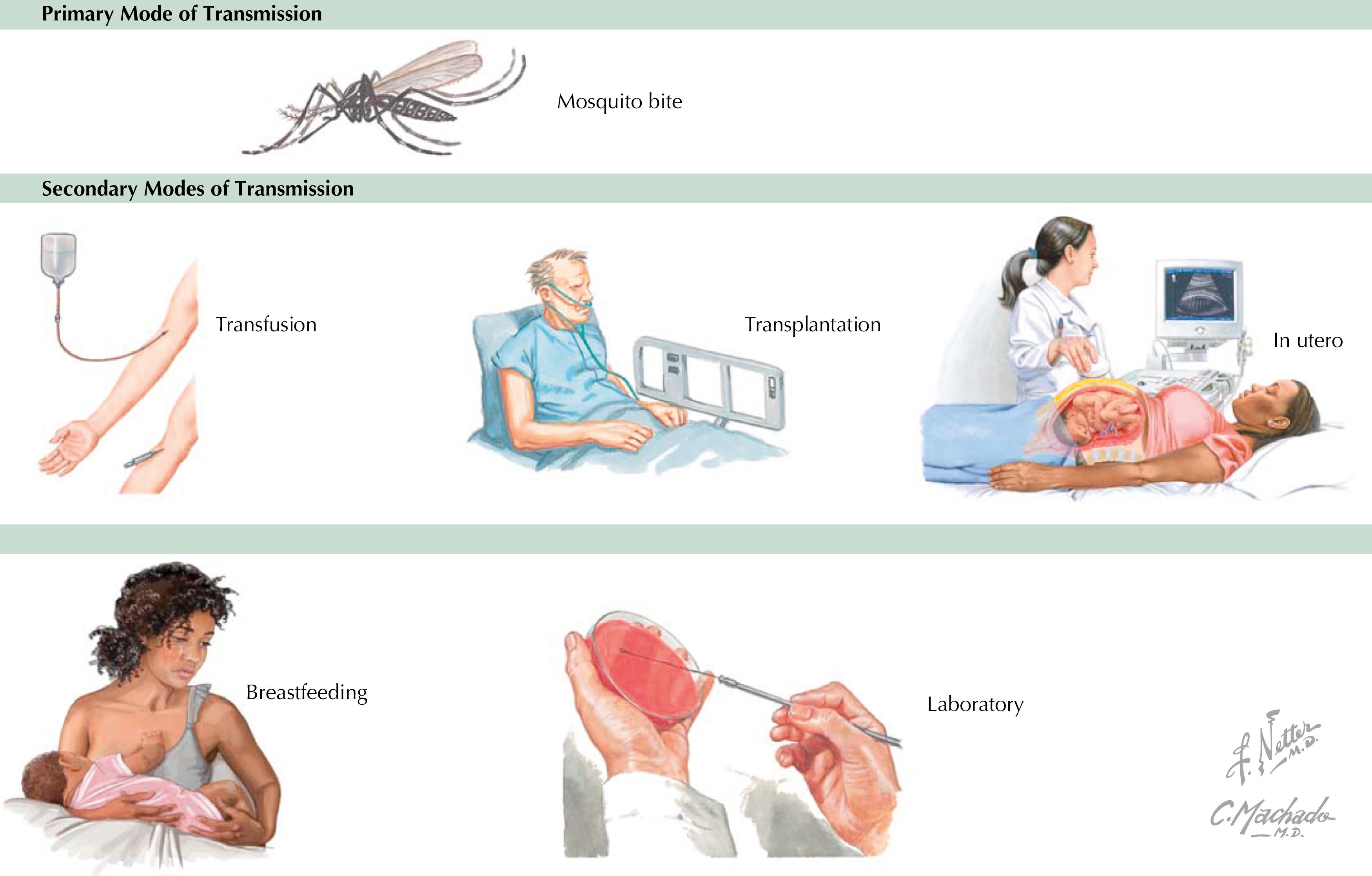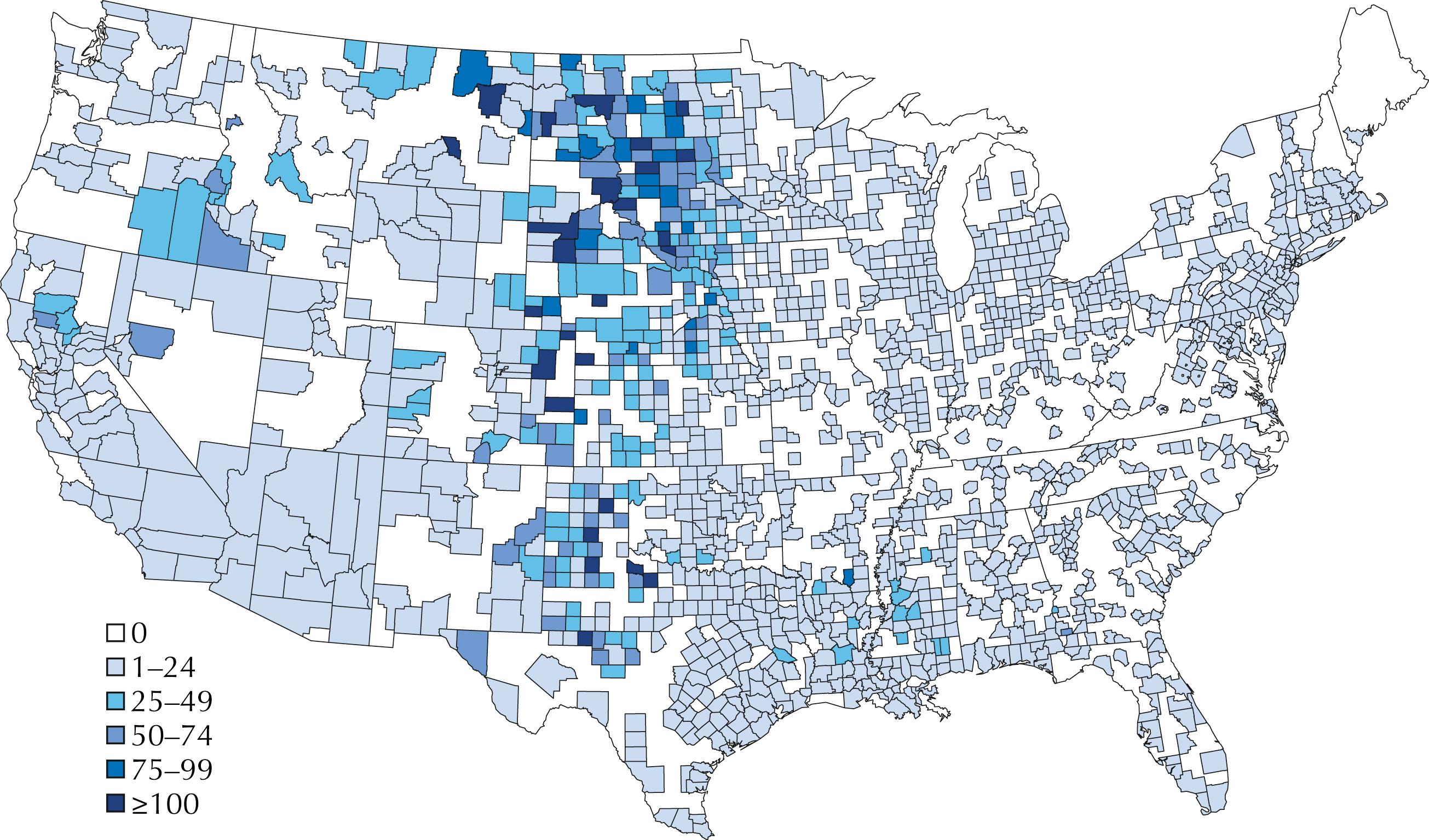Physical Address
304 North Cardinal St.
Dorchester Center, MA 02124
Before 1999, West Nile virus (WNV) received little attention outside Africa, Asia, and Europe, where it caused an endemic, mosquito-borne febrile illness and sporadic encephalitis. After the dramatic emergence of WNV in New York City in 1999, the virus spread westward across the United States, resulting in the largest outbreaks of WNV disease ever reported. From 1999 through 2018, 50,830 cases of WNV disease were reported in the United States, including 24,657 infections affecting the central nervous system (neuroinvasive disease) and 2330 deaths. Over the past two decades, much has been learned about the virology, ecology, transmission, epidemiology, and clinical manifestations of WNV; these topics are reviewed in this chapter.
A 62-year-old male with a history of hypertension presented to medical care in late August after he reportedly woke up confused and unable to get out of bed without assistance. Three days previously his wife noted that he was complaining of a fever, muscle aches, and diarrhea. In the previous 2 weeks, he was reportedly fixing fence on his farm in South Dakota.
On assessment, he had a temperature of 39.2°C, was tachycardiac, and noted to be disoriented and dysarthric. Neurologic examination revealed bilateral asymmetric weakness with hyporeflexia of the upper and lower extremities. Laboratory tests showed a peripheral white blood cell (WBC) count of 5200/mm 3 (75% segmented neutrophils, 15% lymphocytes, 7% monocytes, 3% bands), hemoglobin level of 13.3 g/dL, and platelet count of 125,000/mm 3 . His complete metabolic panel was normal except for a mildly elevated glucose (137 mg/dL). Computed tomography (CT) without contrast of the head was normal. Examination of a cerebrospinal fluid (CSF) sample revealed a WBC count of 157/mm 3 , with 82% lymphocytes and 18% granulocytes, red blood cell count of 15/mm 3 , elevated glucose of 84 mg/dL, and elevated protein of 107 mg/dL. He was admitted and started on broad-spectrum antibiotics. Over the next 24 hours, the patient became obtunded and was transferred to the intensive care unit (ICU), where he was intubated. Over the next week, the patient’s level of consciousness improved, and he made attempts at communication. He was extubated 8 days following admission to the ICU and transitioned to the medical ward before being discharged to a rehabilitation center 3 weeks following his hospital admission. Three months following his acute illness, the patient returned home complaining of moderate fatigue and issues with memory.
The results of CSF and blood cultures were negative and polymerase chain reaction (PCR) for the detection of herpes simplex virus (HSV) in CSF was negative. Other infectious disease testing was negative except for a day 8 serum and CSF sample, both testing positive for WNV IgM antibodies by enzyme-linked immunosorbent assay (ELISA).
WNV is a ribonucleic acid (RNA) flavivirus that is related antigenically to St. Louis encephalitis and Japanese encephalitis viruses. WNV is transmitted to humans primarily through the bite of infected mosquitoes ( Fig. 71.1 ). The predominant vectors worldwide are Culex mosquitoes, which feed primarily from dusk to dawn and breed mostly in peridomestic standing water or pools created by irrigation or rainfall. Mosquitoes become infected with WNV by feeding on a host that can sustain infectious levels of viremia, serving to amplify the virus. Birds are the most important amplifying hosts of WNV; they infect feeding mosquitoes, which then transmit the virus to humans and other mammals during subsequent feeding. Viremia usually lasts fewer than 7 days in immunocompetent persons, and WNV concentrations in human blood are generally too low to infect mosquitoes, making humans incidental or “dead end” hosts. However, person-to-person transmission can occur through blood transfusion and organ transplantation. Intrauterine transmission and probable transmission via human milk have also been described but appear to be uncommon, with most maternal infections having no noticeable impact (e.g., infection or clinical abnormalities) on the fetus or infant. Percutaneous and aerosol infections have occurred in laboratory workers, and an outbreak of WNV infection among turkey handlers also implicated aerosol transmission ( Fig. 71.2 ).


Prior to 1999, WNV activity was reported in Europe and the Middle East, Africa, India, parts of Asia, and Australia (in the form of Kunjin virus, a WNV subtype). WNV was first detected in North America in 1999, after which it rapidly spread across the United States and northward into Canada. The virus was subsequently detected in the Caribbean and Central and South America. In more recent years, WNV disease has reemerged in some areas of Europe.
In the United States, WNV activity in mosquitoes, birds, or other animals has been reported in all states except Alaska and Hawaii. The highest cumulative incidence of WNV neuroinvasive disease has occurred in central plains states (i.e., South Dakota, Nebraska, and North Dakota) ( Fig. 71.3 ). The greatest burden of WNV disease occurs where areas of moderate to high incidence intersect metropolitan areas with high human population densities.

WNV is the most common cause of locally acquired arthropod-borne viral (arboviral) disease in the continental United States and Canada. In the United States, WNV surveillance data are reported to the Centers for Disease Control and Prevention (CDC) through ArboNET, an internet-based arbovirus surveillance system managed by the CDC and state health departments. From 1999 through 2018, 50,830 cases of WNV disease were reported to ArboNET, including 24,657 (49%) cases of neuroinvasive WNV disease and 26,173 (51%) cases of WNV nonneuroinvasive disease; there were 2330 (5%) associated deaths. Reports of neuroinvasive WNV disease are considered the most accurate indicator of WNV activity in humans, owing to the substantial associated morbidity and mortality and the presumed completeness of reporting by clinicians and laboratories. In contrast, WNV nonneuroinvasive disease (WNV fever) is likely underdiagnosed and underreported, as people with mild illness may not seek medical care or clinicians may not suspect or confirm WNV disease. Previous studies have estimated that between 30 and 70 nonneuroinvasive disease cases occur for every case of WNV neuroinvasive disease reported. Based on the number of neuroinvasive disease cases reported, an estimated 739,710 to 1,725,990 nonneuroinvasive disease cases of WNV occurred in the United States from 1999 through 2018 with roughly 1% to 3% of those reported.
Become a Clinical Tree membership for Full access and enjoy Unlimited articles
If you are a member. Log in here